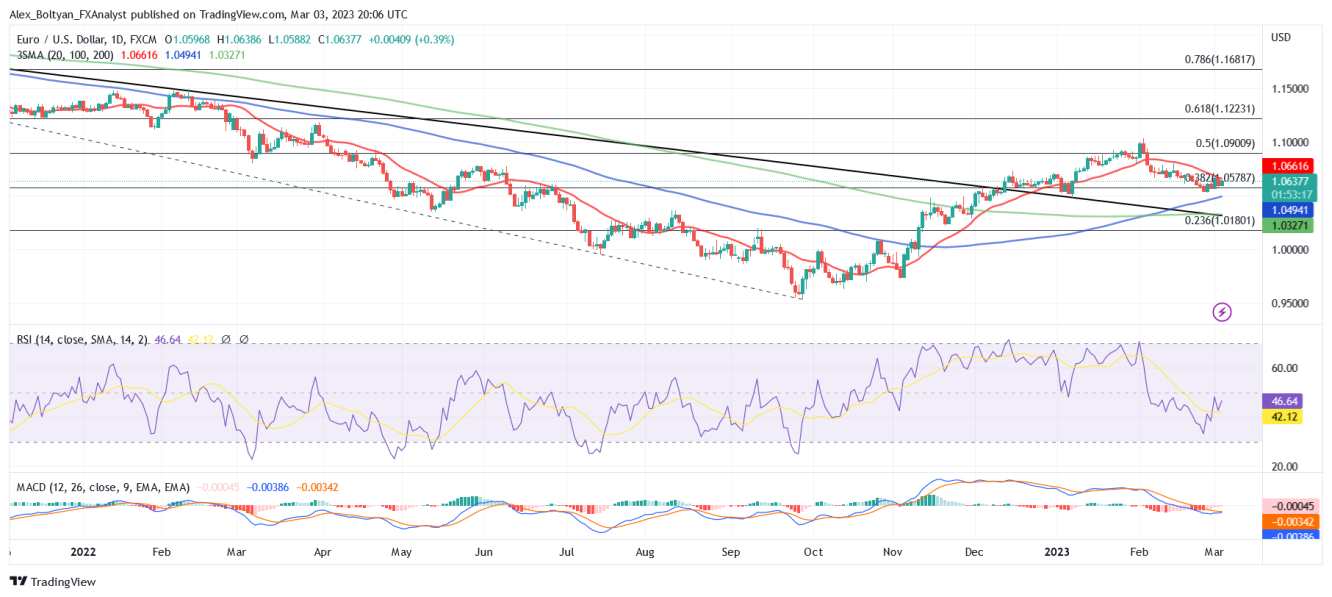The EUR/USD advanced slightly on Friday and closed the week higher as the U.S. dollar weakened across the board amid a better market mood, which saw Treasury yields receding from recent highs.
At the time of writing, the EUR/USD pair is trading at the 1.0630 area, up 0.3% on the day and posting a modest 0.8% weekly gain.
Data from S&P Global showed that the U.S. services PMI stood in expansion territory at 50.6 in February, slightly above expectations and the previous monthly reading, while the Composite PMI managed to hold above the 50 threshold at 50.1 but came below the expectations of 50.2. The ISM Services PMI also lived up to the market expectations as it came in at 55.1 in the same period, above the 54.5 of consensus.
Across the pond, the German {0|S&P Global}} Composite PMI came in at 50.7 in February, below the 51.1 expected. However, the euro gained traction on the back of European Central Bank (ECB) Governing Council member Pierre Wunsch's comments, who stated that a terminal rate of 4% should not be discarded if core inflation does not ease.
For the upcoming week, the focus will be on Federal Reserve Chair Jerome Powell's semiannual testimony before the U.S. Congress and the February jobs report on Friday.
From a technical perspective, the EUR/USD holds a slightly bearish bias on the daily chart, although the outlook remains positive on the weekly chart.
Critical short-term resistance is seen at the 20-day Simple Moving Average (SMA) at the 1.0660 area, followed by the 1.0700 psychological mark. On the other hand, support levels could be found at 1.0578, which is the 38.2% retracement of the 1.2266-0.9535 decline, a former resistance turned into support. A loss of the latter would expose the 20-week SMA at 1.0515 and at the 1.0500 psychological level, which is being reinforced by the 100-day SMA.


